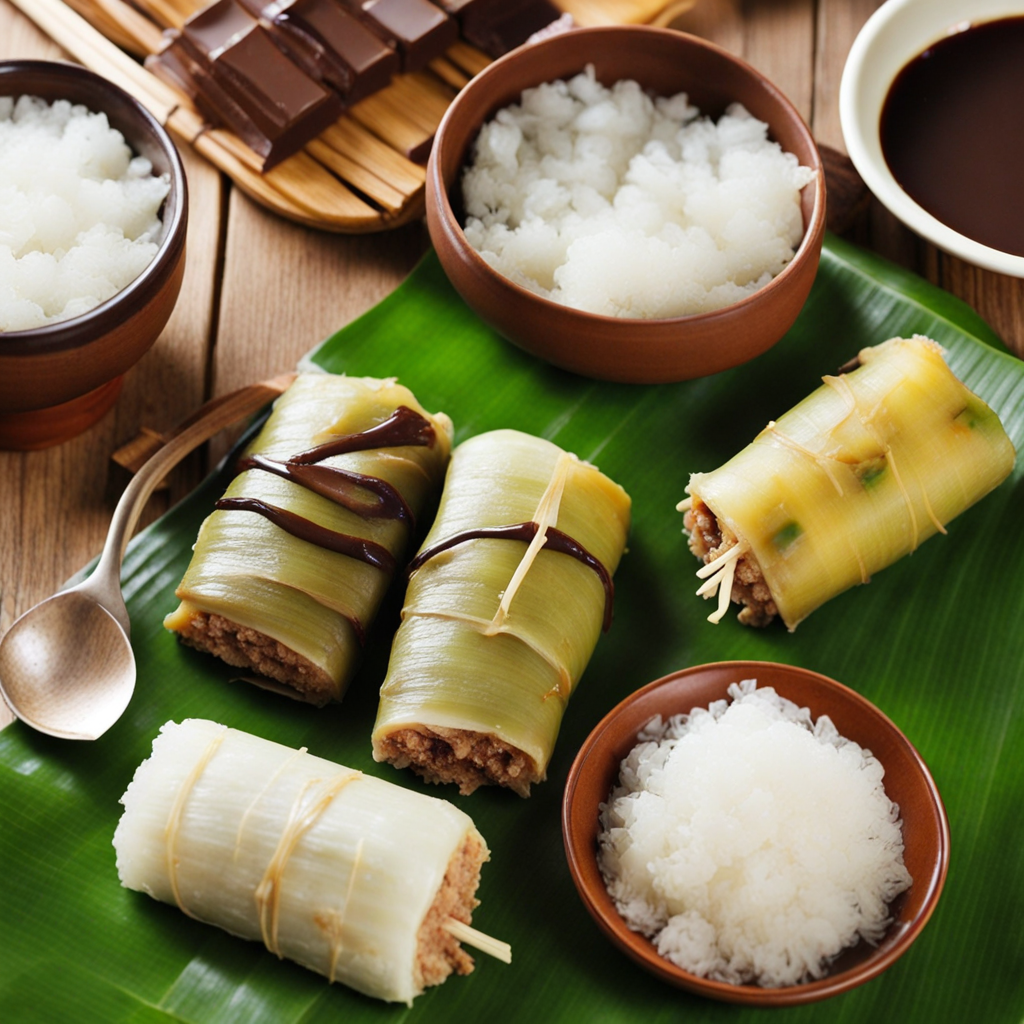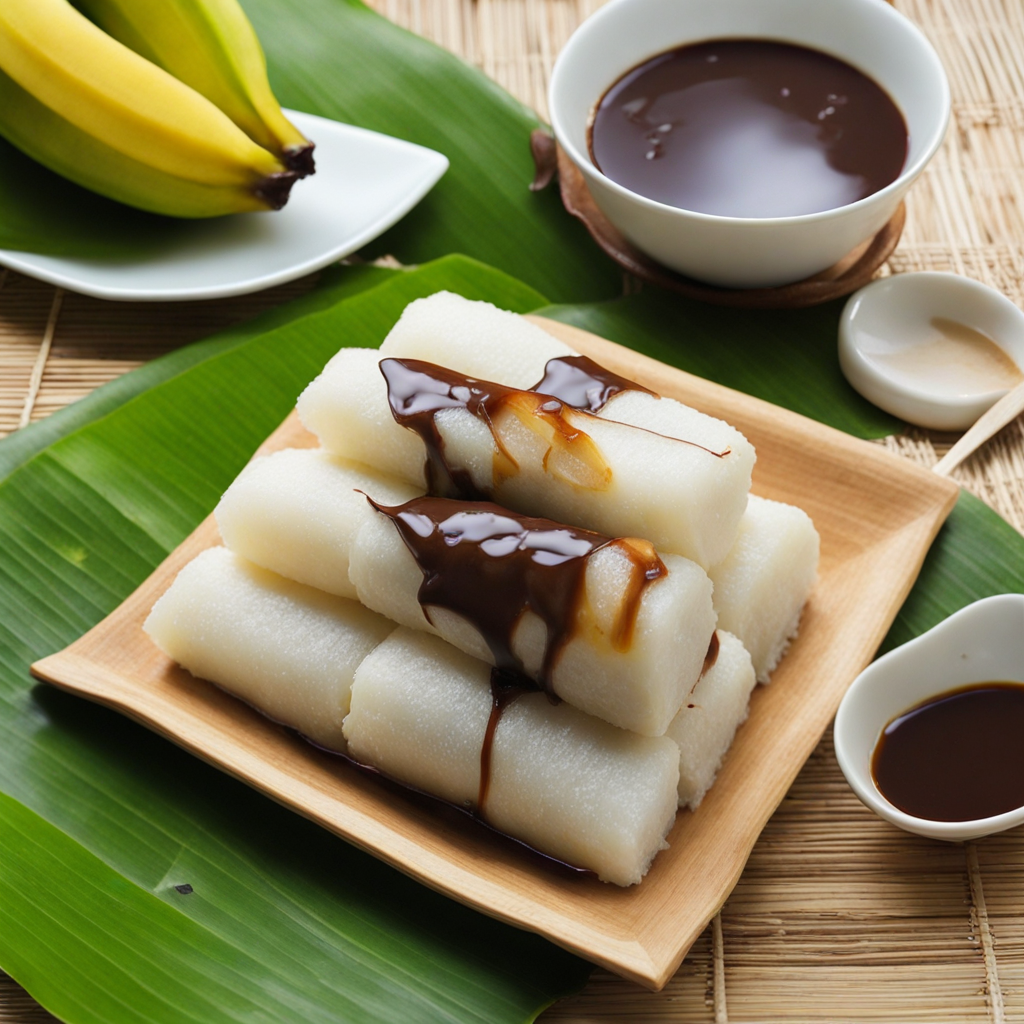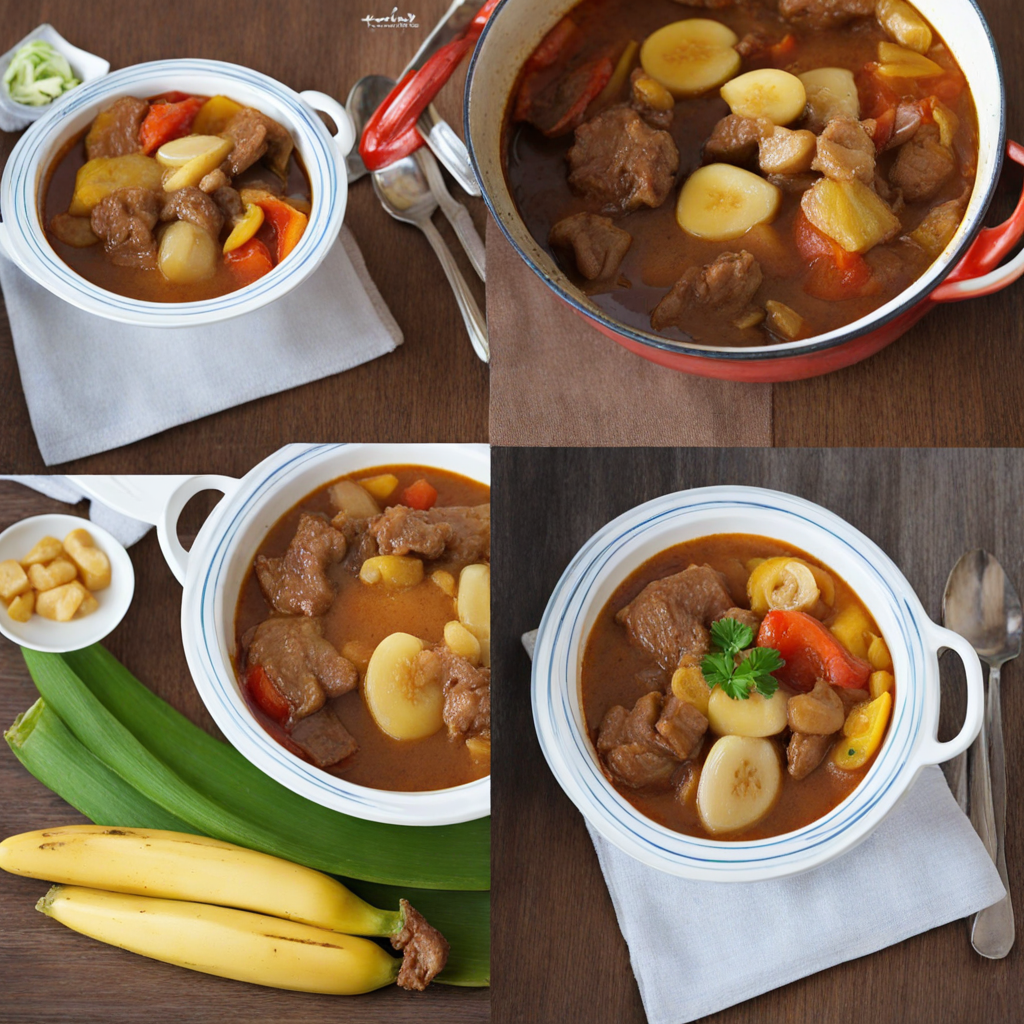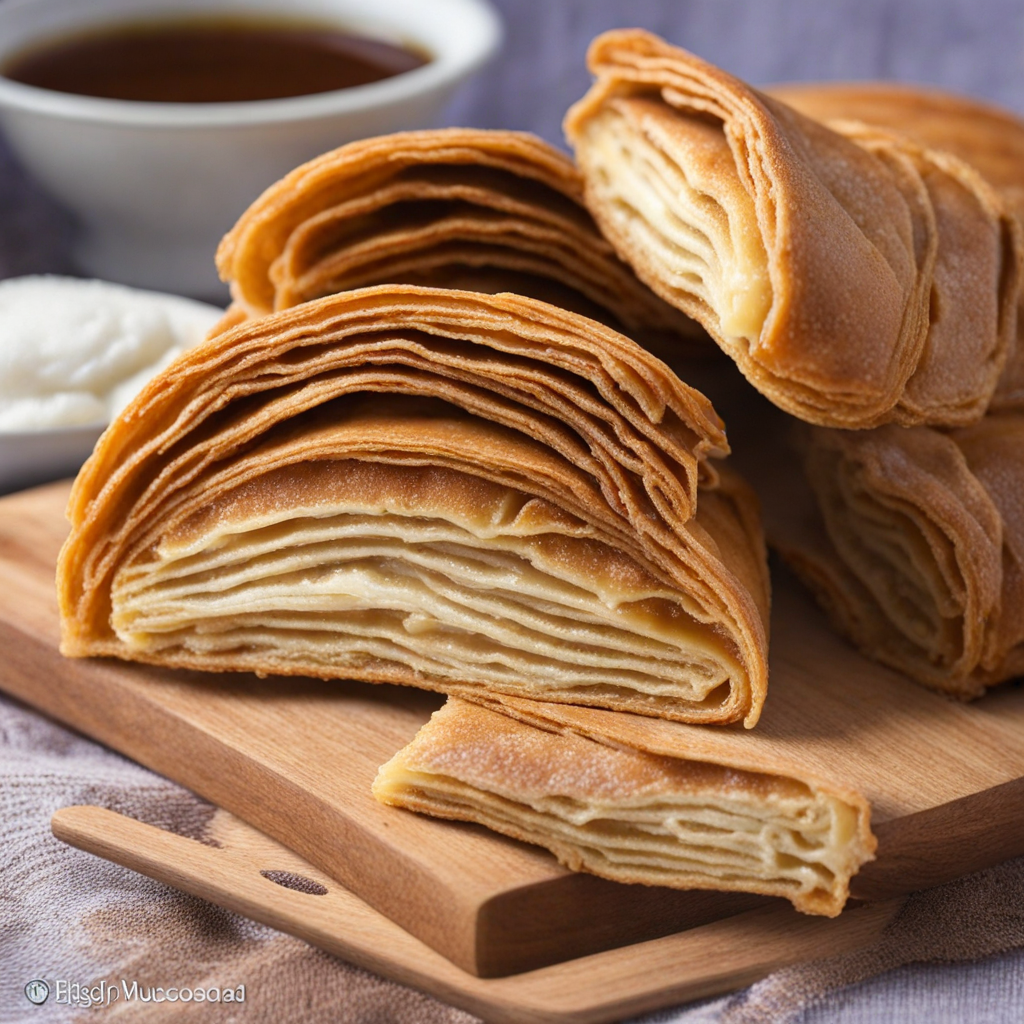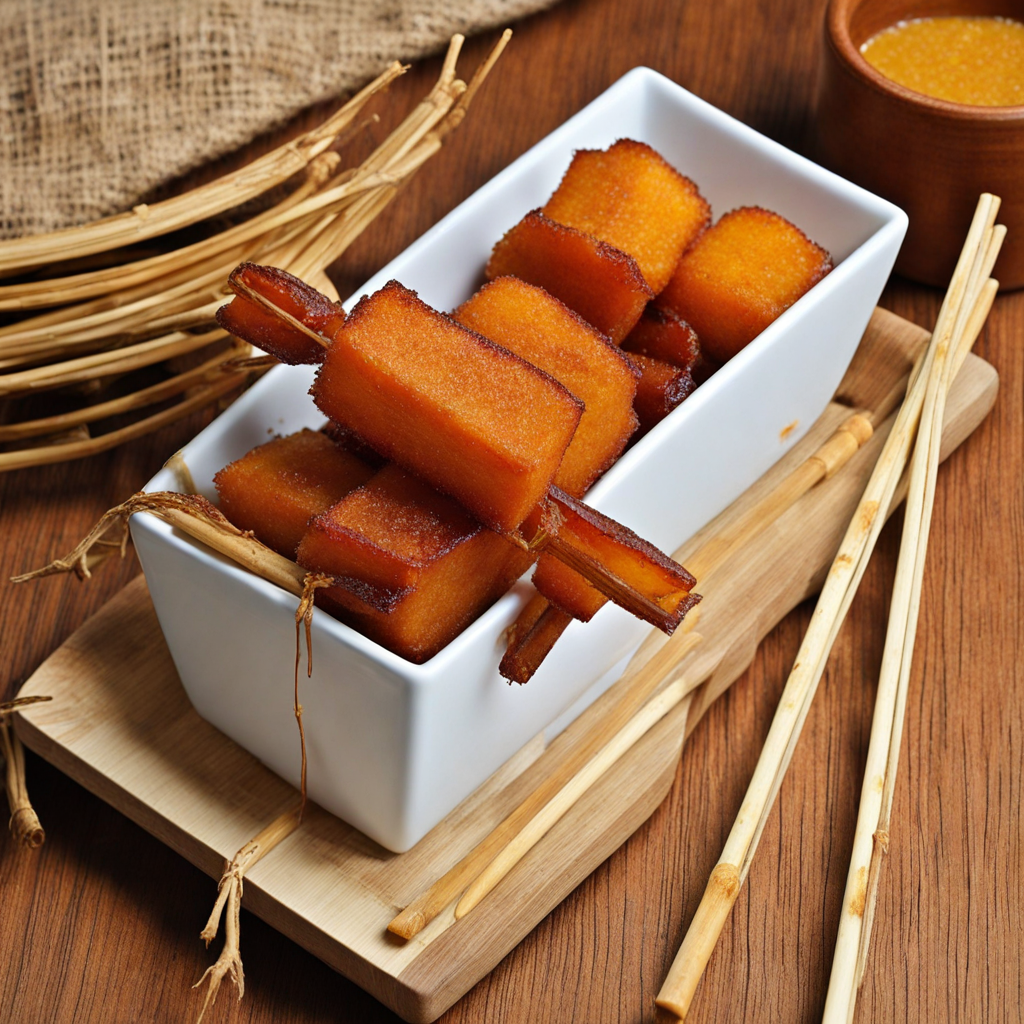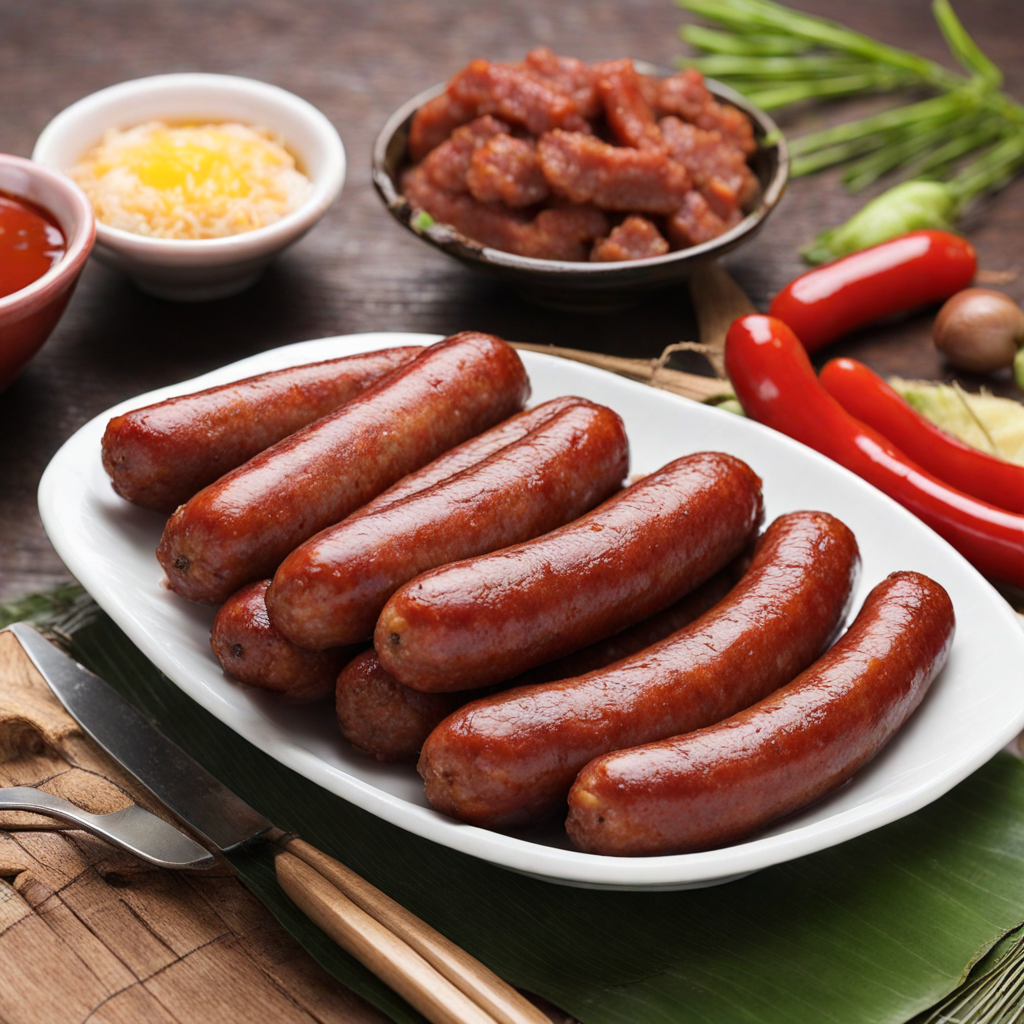Moron
Moron is a traditional Filipino delicacy that hails from the province of Leyte and is particularly popular in the Eastern Visayas region. This sweet treat is a type of rice cake that showcases the rich culinary heritage of the Philippines, blending indigenous ingredients and techniques with influences from various cultures that have touched the archipelago throughout its history. Moron is often associated with festive occasions, family gatherings, and celebrations, making it a cherished comfort food for many Filipinos. The history of Moron can be traced back to the use of rice as a staple food in the Philippines. The name "Moron" is derived from the term "moron," which refers to the way the dish is prepared. Traditionally, Moron is made from glutinous rice, which has been a significant part of Filipino cuisine for centuries. The preparation method reflects a communal spirit, as families often gather to create this delicacy, passing down recipes and techniques through generations. The dish's popularity has grown beyond its regional roots, with many Filipinos now enjoying it during various festivities nationwide. The flavor profile of Moron is a delightful combination of sweetness and nuttiness, with a chewy texture that is satisfying to bite into. The primary flavor comes from the use of coconut milk, which lends a creamy richness to the cake. Additionally, the inclusion of chocolate in some variations enhances its sweetness, creating a deep, rich flavor that complements the natural taste of the glutinous rice. Some recipes also incorporate a hint of a savory
How It Became This Dish
The History of Moron: A Filipino Delicacy Origin and Ingredients Moron is a traditional Filipino delicacy that has its roots in the rich culinary heritage of the Philippines, particularly in the region of Western Visayas. This glutinous rice cake is characterized by its unique combination of sweet and savory flavors, which reflect the diverse cultural influences that have shaped Filipino cuisine over centuries. The primary ingredients for moron include glutinous rice, coconut milk, sugar, and sometimes chocolate or cocoa powder, giving it a distinct dark color and a rich, moist texture. The word "moron" is believed to be derived from the Tagalog term "morón," which refers to a type of rice cake made from glutinous rice flour. This cake is similar to other rice-based delicacies found throughout the Philippines, but moron has its unique identity, particularly in the province of Leyte, where it is most commonly associated. Cultural Significance Moron holds a special place in Filipino culture, often enjoyed during celebrations, festivals, and family gatherings. It is particularly popular during the Christmas season, when families come together to prepare traditional dishes and sweets. The process of making moron is often a communal activity, with multiple family members participating in the preparation, which fosters a sense of togetherness and shared heritage. The significance of moron goes beyond mere sustenance; it serves as a symbol of Filipino hospitality and warmth. When families host guests, offering moron is a gesture of goodwill and a way to share a piece of their culture. It is often paired with other traditional delicacies, creating a feast that showcases the rich tapestry of Filipino culinary traditions. Development Over Time The development of moron can be traced back to pre-colonial times when indigenous people utilized locally available ingredients such as rice and coconut to create various dishes. As the Philippines underwent centuries of colonization and cultural exchange, the culinary landscape evolved, incorporating influences from Spanish, Chinese, and other Asian cuisines. During the Spanish colonial period, which lasted from the late 16th century to the late 19th century, the introduction of new ingredients and cooking techniques significantly influenced Filipino food. While the Spanish brought in various cooking methods, the use of chocolate, which was introduced through trade routes, became a popular addition to many local dishes, including moron. This fusion of flavors is evident in the way moron can be prepared with or without chocolate, allowing for variations that cater to different palates. In the 20th century, with the rise of modernization and globalization, traditional foods like moron began to face challenges. The increasing availability of processed foods and the fast-paced lifestyle of urban living led to a decline in the preparation of traditional dishes. However, a renewed interest in heritage and traditional foods emerged in the late 20th and early 21st centuries, driven by a desire to reconnect with cultural roots and promote local cuisine. Today, moron is not only enjoyed in homes but has also found its way into restaurants and food festivals, where it is celebrated as a quintessential Filipino treat. Modern chefs are experimenting with moron, incorporating it into contemporary dishes or presenting it in innovative ways while still respecting its traditional roots. This evolution reflects a broader trend in Filipino cuisine, where chefs aim to highlight local ingredients and culinary traditions while appealing to a global audience. Regional Variations and Modern Adaptations While moron is primarily associated with Leyte, there are regional variations across the Philippines. For instance, in some areas, moron may be flavored with different ingredients like ube (purple yam) or pandan, offering distinct tastes and colors. Each locality often has its secret recipes or preparation methods that have been passed down through generations, showcasing the diversity of Filipino cuisine. In recent years, the global rise of interest in Filipino food has led to moron being featured in culinary events and mainstream media, further popularizing this traditional delicacy. Food enthusiasts and chefs are now highlighting moron in international food festivals, promoting it as a must-try dish for those exploring the flavors of the Philippines. Additionally, social media has played a significant role in this resurgence, as food bloggers and influencers share their experiences and recipes, making moron accessible to a wider audience. Conclusion Moron encapsulates the essence of Filipino culinary heritage—its history, cultural significance, and the evolution it has undergone over time. From its origins as a simple rice cake made from locally sourced ingredients to its status as a beloved delicacy enjoyed during celebrations, moron reflects the adaptability and resilience of Filipino cuisine. As food trends continue to evolve, moron remains a cherished symbol of community, family, and the vibrant tapestry of flavors that define the Philippines. Through the lens of moron, one can appreciate the beauty of Filipino culture and the importance of preserving culinary traditions. As more people discover and embrace this delightful treat, moron is poised to remain a staple in Filipino households, ensuring that the stories and flavors of the past continue to thrive in the present and future.
You may like
Discover local flavors from Philippines


